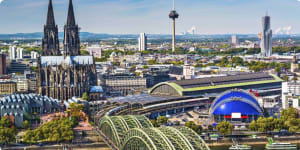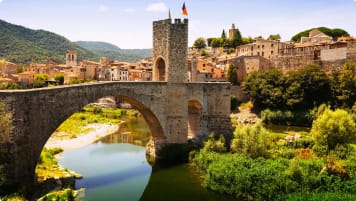Contemporary Germany small group tour
Join us on this this comprehensive small group journey in Germany that begins in Heidelberg and ventures south to the romantic Black Forest to Munich. Spend 21 nights in Germany, featuring Berlin, Munich, the Black Forest, Bavaria, the Alps, and the Rhine.
From €11,080EUR
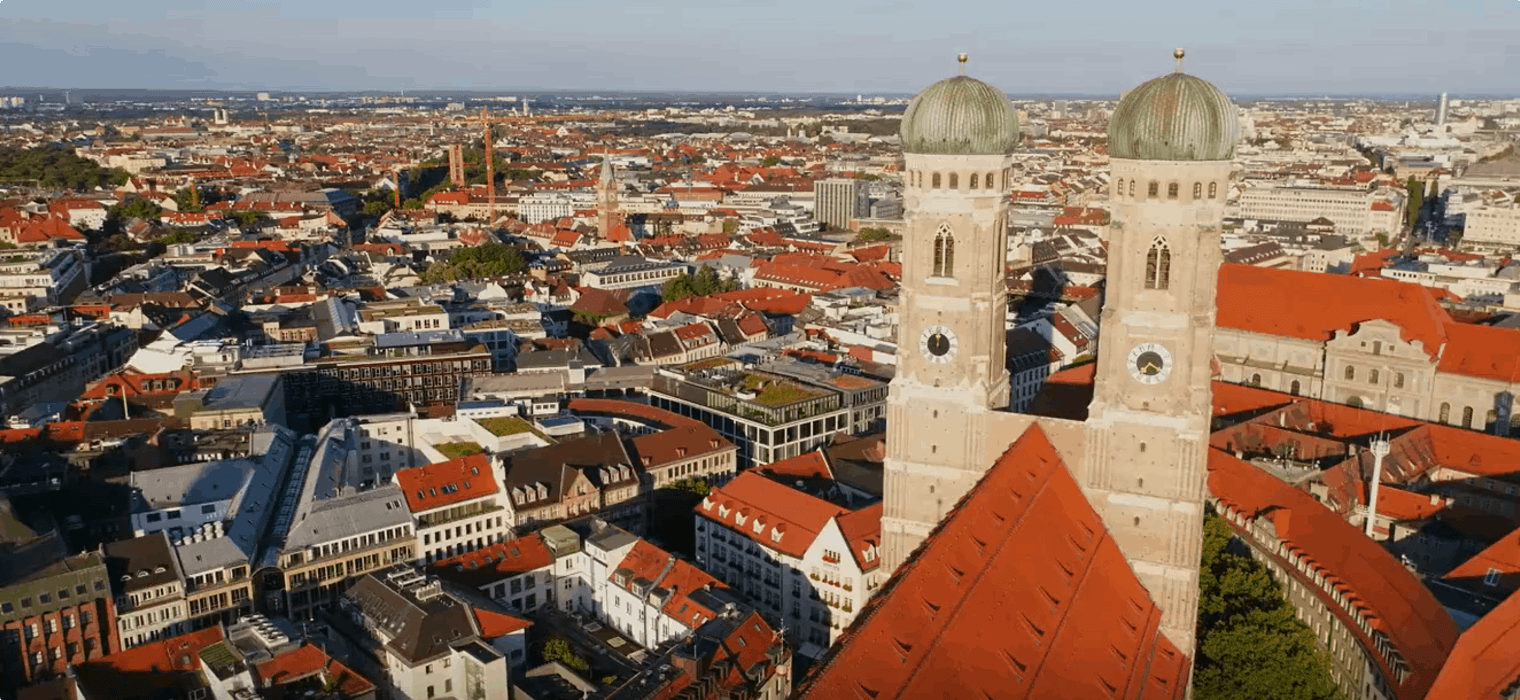
Highlights
- 1. Visit the magnificent Hohenschwangau Castle and the Neuschwanstein Castle in the village of Hohenschwangau in the Bavarian Alps.
- 2. Explore the contemporary and vibrant cities of Berlin, Munich, and Dresden.
- 3. Enjoy the Black Forest and Harz Mountains, often considered to harbour the true soul of Germany.
- 4. Visit Heidelberg, a university town with narrow, cobblestone streets flanked with intricate Baroque architecture.
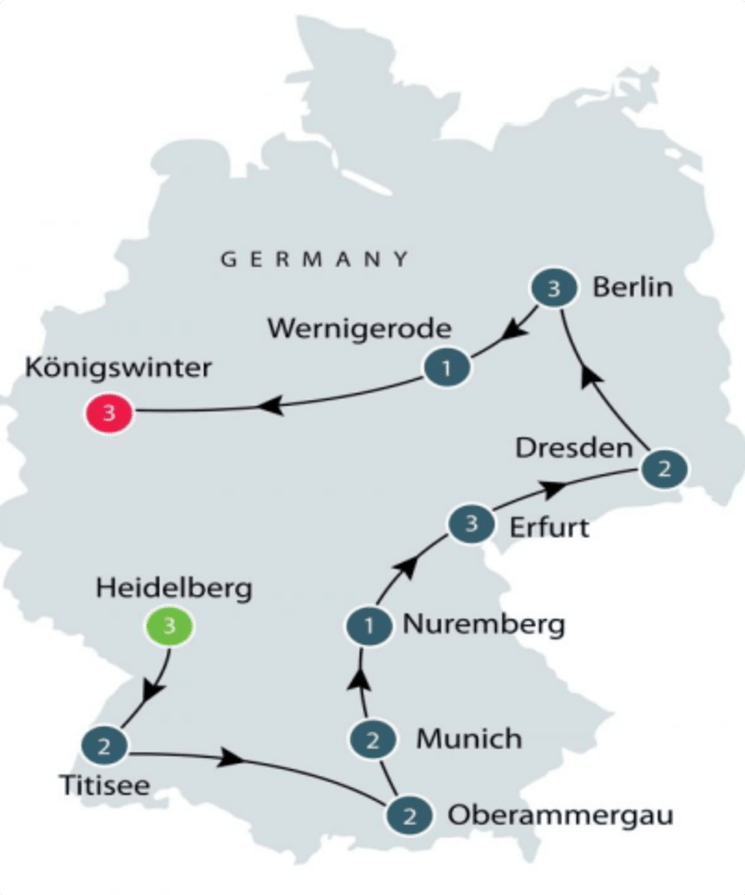
Departure Dates
| Departure Date | Price |
|---|---|
| 24 August 2025 Ends 14 September 2025 • 22 days €11,080 Twin €12,481 Single Available | Selected |
| 12 April 2026 Ends 03 May 2026 • 22 days €11,690 Twin €13,091 Single Available | |
| 23 August 2026 Ends 13 September 2026 • 22 days €11,690 Twin €13,091 Single Available | |
| 11 April 2027 Ends 02 May 2027 • days €11,690 Twin €13,091 Single Available | |
| 22 August 2027 Ends 12 September 2027 • days €11,690 Twin €13,091 Single Available |
Contemporary Germany Tour
Contemporary Germany is a specialised small group tour exploring Germany, long-regarded as one of the planet's most convivial nations. This small group tour of up to 16 mature and senior travellers is seeking to learn and explore as they tour, often to places off the beaten track and away from the traditional tourist areas. The tour is for couples and solo travellers. The spirit of hospitality is palpable from port-city Hamburg in the country's north, all the way down to Munich: heart of Bavaria.
Itinerary for the Contemporary Germany
Our tour of contemporary Germany begins in Heidelberg, a university town famous for its narrow, cobblestone streets flanked with intricate Baroque architecture. After exploring Heidelberg and its surrounds, we venture south to the romantic Black Forest, long associated with the dark fairytales of the Brothers Grimm. Our base is Titisee, from where we will visit the stunning cathedral and city gates of Freiburg. We will also visit nearby Feldburg, where a cable-car ride will provide us views across Feldsee Lake. From Titisee, we travel to the village of Oberammergau. But along the way, we pause to visit - by a horse-drawn carriage ride - the hill-top Neuschwanstein Castle, nestled in the Bavarian Alps, we continue on to Munich, the capital of Bavaria.
Munich is renowned for its annual Oktoberfest, but the spirit of celebration is not confined to a single month in Bavaria's jovial capital. We learn about the cultural heritage of this memorable city over two days, including a city tour with a local guide, and a visit to the Deutsches Museum, the world's largest museum of science and technology. After Munich we head to Nuremberg, pausing on the way to take a walking tour of Regensburg, recognised as a UNESCO world heritage site for its historic Gothic buildings. In Nuremberg, we learn about Germany's history, including a visit to the haunting Nazi Rally Site. As we travel from Nuremberg to Wagner's hometown of Bayreuth, we pause in Bamburg and Coburg for sight-seeing. We finally reach Erfurt: a city of flowers, horticulture, and history. This is also our base for a visit to Weimar: birthplace of the cultural movement Weimar Classicism, and an awe-inspiring list of intellectuals.
Dresden is our next destination. It is beloved for its intricate old town and impressive museums and architecture. Dresden will be followed by cosmopolitan Berlin. In Berlin we take a guided tour of all the main sights: the tree-lined Unter den Linden boulevard, leading to the iconic Brandenburg Gate; Checkpoint Charline on the Berlin Wall; and the Reichstag building, which famously burned in 1933, allowing Hitler's first moves towards dictatorial power. From Berlin we make a morning trip to the royal castles of nearby Potsdam, the Cecilenhof Palace and the rococo Sanssouci. You will also have plenty of spare time to experience modern Berlin's cutting-edge artistic culture.
After three nights in Germany's vibrant capital, we journey west to Schierke, where we will board a train set for Brocken: the peak of the Harz mountain range. After spending time at the summit, we reboard the train for Wernigerode. This charming town is distinguished by its half-timbered houses, and the legend of witches who occupy the nearby mountains.
After Wernigerode, we continue west for our final stop in Konigswinter. For the last three nights of the tour, this will be our base upon the Rhine. We take a city tour of Bonn and explore a cathedral in Cologne, and take a cruise along the iconic Rhine River. Afterward, our tour draws to a close.
Articles about Germany published by Odyssey Traveller
The following list of articles published by odyssey Traveller for mature aged and senior travellers to maximise their knowledge and enjoyment of Berlin and Germany when visiting;
- A history of Berlin for Tourists.
- A guide to Germany
- Fifteen must see sights in Berlin
- A list of ten books for people thinking of visiting Berlin
- Ten of the Best art galleries in Europe to visit.
- The Bauhaus School
External articles to assist you on your visit to Germany
- Understanding Germany
- UNESCO World heritage sites; Potsdam & Berlin, places to visit.
- Berlin divided
Odyssey has more information on Germany that you can research. For more details on this tour, click the ‘Top 5’ or ‘Itinerary’ buttons above! If you’re keen to experience this tour, please call or send an email. Or, to book, simply fill in the form on the right hand side of this page.
Tour Notes
Itineraries may change if flight schedules, site availability, and other inclusions have to be amended prior to departure.
Gallery
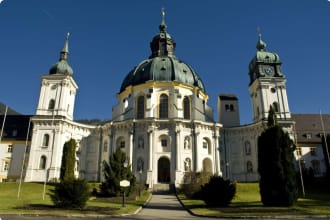
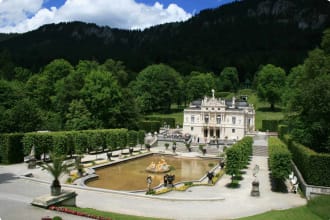
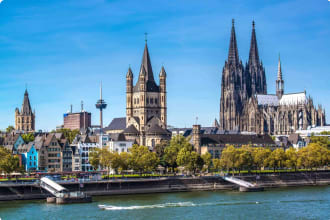

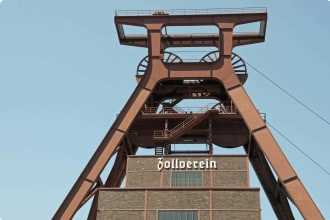
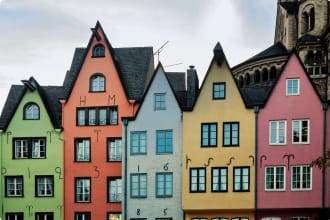
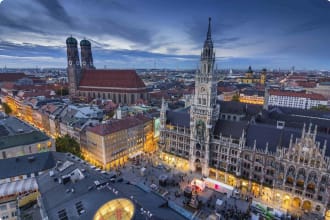
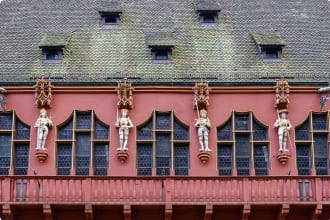

Itinerary
22 days
Day 1: Heidelberg
Accommodation: 3 nights at NH Heidelberg or similar.
Upon arrival in Heidelberg we transfer to our hotel individually. Welcome dinner will be in the hotel, with a couple of glasses of wine per person.
Day 2: Heidelberg
Accommodation: NH Heidelberg or similar.
We have a morning city tour with a local guide to see the main sights of Heidelberg. We transfer on to Worms for a guided city tour before transferring back to Heidelberg.
Day 3: Heidelberg
Accommodation: NH Heidelberg or similar.
Today we travel from Heidelberg to Wurzburg, where we will be met by our local guide for a tour of the main sights of the city including entrance to the Residenz. On our return journey to Heidelberg we pause in Rothenburg ob der Tauber, known for its well-preserved medieval old town. Dinner this evening will be in Heidelberg.
Day 4: Titisee
Accommodation: 2 nights at Bruggers Hotelpark Am See or similar.
Today we travel to Baden Baden, with a stop to view the town, before transferring on to Gutach with entrance to the Black Forest Open Air Museum. We transfer to Titisee with the remainder of the day free before dinner.
Day 5: Titisee
Accommodation: Bruggers Hotelpark Am See or similar.
Today we travel from Titisee to Freiburg, with a city tour with a local guide, taking in the main sights of the city. From Freibrug we travel on to Feldberg, with return tickets on the Cable Car to take in the views over Feldsee. We have a final transfer back to Titisee in time for dinner.
Day 6: Titisee
Accommodation: Bruggers Hotelpark Am See or similar.
We travel from Titisee to Friedrichshafen, with entrance to the Zeppelin Museum. We transfer on to Hohenschwangau and take a carriage up to Neuschwanstein Castle, with entrance and a guided tour of the castle interior. We will take a carriage back down from the castle before transferring on to Steingaden, where we visit the Wies Rococo Church, before finally returning to Titisee.
Day 7: Munich
Accommodation: 2 nights at Eurostars Hotel or similar.
Today, we make our way to Munich. This afternoon there will be free time to explore this amazing city before our dinner.
Day 8: Munich
Accommodation: Eurostars Hotel or similar.
This morning we enjoy a city tour with our local guide, including entrance to the Deutches Museum. We have an afternoon visit to the BMW Welt Building, with entrance and a brief tour.
Day 9: Nuremberg
Accommodation: 2 night at Woerhdersee Hotel Nuremberg Centre or similar.
We travel from Munich to Regensburg with a short guided walking tour of Regensburg. From Regensburg we head on to Nuremberg for an afternoon tour with a local guide to take in the main sights of the city, including a visit to the Nazi Rally Site and entrance to the German National Museum.
Day 10: Erfurt
Accommodation: 3 nights at Radisson Blu hotel or similar.
Today we journey from Nuremberg to Bayreuth, with a stop to view the Bavarian city of Bamburg. We will pause in Coburg, with entrance and a guided tour of the castle before continuing our journey to Erfurt, our base for the next 3 nights. After check-in there will be some time to freshen up before our dinner.
Day 11: Erfurt
Accommodation: Radisson Blu hotel or similar.
We have a morning city tour with a local guide to take in the main sights. We travel from Erfurt to Weimar with a city tour led by a local guide to view the main sights, including entrances to Goethe’s House and Museum, and the Castle and Museum. We return from Weimar to Erfurt.
Day 12: Erfurt
Accommodation: Radisson Blu hotel or similar.
From Erfurt we arrive in Eisenach and have included entrance to Bach’s birthplace and Museum. We transfer back to Erfurt with the remainder of the day at leisure.
Day 13: Dresden
Accommodation: 2 nights at Holiday Inn Express Dresden or similar.
From Erfurt we travel to Leipzig, with stops en route to the Battle of Nations site memorial and the Russian Orthodox Church. We arrive in Leipzig and take a city tour with a local guide to view the main sights, including the Gewandhaus tour and visits to some of the local churches. We travel on from Leipzig to Colditz, with entrance to the castle. Dinner will be served in Dresden.
Day 14: Dresden
Accommodation: Holiday Inn Express Dresden or similar.
We have a morning city tour with a local guide to view the main sights of Dresden, including entrance to the Zwinger, Old Masters gallery. From Dresden we go to Meissen for an afternoon factory tour and museum visit of the Porcelain Factory. We transfer back to Dresden for the night.
Day 15: Berlin
Accommodation: 3 nights at Maritim Pro-Arte hotel or similar.
We travel from Dresden to Wittenberg, with a stop to explore. From Wittenberg we go to Berlin, with the remainder of the day at leisure. Dinner will be included this evening.
Day 16: Berlin
Accommodation: Maritim Pro-Arte hotel or similar.
We have a morning excursion to Potsdam with entrance to both Cecilienhof Palace and Sansoucci Palace. We transfer back to Berlin with the remainder of the day at leisure.
Day 17: Berlin
Accommodation: Maritim Pro-Arte hotel or similar.
We have a morning guided city tour with a local guide to view the main sights of the city, including the Brandenburg Gate, Holocaust Memorial and Checkpoint Charlie. Pending availability, we may have the opportunity to take a Reichstag tour (TBC).
Day 18: Wernigerode
Accommodation: 1 night at Garni Hotel Alt Wernigerode or similar.
From Berlin we go to Schierke, with an excursion on the Brocken Railway from Brocken to the mountaintop and then back to Wernigerode. We arrive in Wernigerode for our dinner.
Day 19: Konigswinter
Accommodation: 3 nights at Maritim Konigswinter or similar.
We travel from Wernigerode to Hamelin, with a stop to view before transferring on to Konigswinter. The remainder of the day is at leisure. Dinner is included this evening.
Day 20: Konigswinter
Accommodation: Maritim Konigswinter or similar
From Konigswinter we travel on to Bonn with a city tour with a local guide, viewing the main sights including entrance to Beethoven’s birthplace museum. From Bonn we go to Cologne, with an afternoon visit to the Cathedral and free time to explore the city. We transfer back from Cologne to Konigswinter.
Day 21: Konigswinter
Accommodation: Maritim Konigswinter or similar.
From Konigswinter we go to Mainz, with a city tour taken by a local guide, viewing the mains sights and including entrance to the Gutenberg Museum. We transfer from Mainz to Boppard and take a Rhine River Cruise from Boppard to Sankt-Goar. We arrive in Sankt-Goar and transfer back to Konigswinter (or similar location).
Day 22: Konigswinter
Our tour concludes after breakfast.
Includes / Excludes
What’s included in our Tour
- 21 nights of hotel accommodation.
- 21 breakfasts and 13 dinners.
- Transport, entrance fees and excursions as indicated.
- Applicable entry fees and services of local guides.
- Services of a group leader.
- Gratuities and necessary tips.
- Detailed tour information booklet.
What’s not included in our Tour
- Return international airfares and departure taxes.
- Comprehensive travel insurance.
- Items of a personal nature such as telephone calls and laundry.
Participants must be able to carry their own luggage, climb and descend stairs, be in good health, mobile and able to participate in 3-5 hours of physical activity per day, the equivalent of walking / hiking up to 8 kilometers per day on uneven ground.
Book now
Make it a private tour
Easing your journey
Crossing international borders with restrictions
The list of requirements to travel internationally has changed and will continue to change for several years. Odyssey is here to assist you in managing your way through these requirements:
For more information see our Crossing international borders with restrictions page.
Book With Confidence
If less than 30 days before your tour starts you are unable to travel as a result of Government travel restrictions, Odyssey Traveller will assist you with a date change, provide you with a credit or process a refund for your booking less any non-recoverable costs.
See Terms and conditions for details.
Peace of Mind Travel
The safety of our travellers, tour leader, local guide and support staff has always been our top priority and with the new guidelines for public health and safety for keeping safe for destinations around the world, we’ve developed our plan to give you peace of mind when travelling with us.
See Peace of Mind Travel for details.
Reading List Download PDF
The Berlin Wall: The History and Legacy of the World's Most Notorious Wall
Charles Rivers
“From Stettin in the Baltic to Trieste in the Adriatic an ‘Iron Curtain’ has descended across the continent. Behind that line lie all the capitals of the ancient states of Central and Eastern Europe. Warsaw, Berlin, Prague, Vienna, Budapest, Belgrade, Bucharest and Sofia; all these famous cities and the populations around them lie in what I must call the Soviet sphere, and all are subject, in one form or another, not only to Soviet influence but to a very high and in some cases increasing measure of control from Moscow.” – Winston Churchill, 1946
"This is a historic day. East Germany has announced that, starting immediately, its borders are open to everyone. The GDR is opening its borders ... the gates in the Berlin Wall stand open." – German anchorman Hans Joachim Friedrichs
Though it never got “hot,” the Cold War was a tense era until the dissolution of the USSR, and nothing symbolized the split more than the Berlin Wall, which literally divided the city. Berlin had been a flashpoint even before World War II ended, and the city was occupied by the different Allies even as the close of the war turned them into adversaries. After the Soviets’ blockade of West Berlin was prevented by the Berlin Airlift, the Eastern Bloc and the Western powers continued to control different sections of the city, and by the 1960s, East Germany was pushing for a solution to the problem of an enclave of freedom within its borders. West Berlin was a haven for highly-educated East Germans who wanted freedom and a better life in the West, and this “brain drain” was threatening the survival of the East German economy.
In order to stop this, access to the West through West Berlin had to be cut off, so in August 1961, Soviet premier Nikita Khrushchev authorized East German leader Walter Ulbricht to begin construction of what would become known as the Berlin Wall. The wall, begun on Sunday August 13, would eventually surround the city, in spite of global condemnation, and the Berlin Wall itself would become the symbol for Communist repression in the Eastern Bloc. It also ended Khrushchev’s attempts to conclude a peace treaty among the Four Powers (the Soviets, the Americans, the United Kingdom, and France) and the two German states. The wall would serve as a perfect photo-opportunity for two presidents (Kennedy and Reagan) to hammer the Soviet Communists and their repression, but the Berlin Wall would stand for nearly 30 years, isolating the East from the West. It is estimated about 200 people would die trying to cross the wall to defect to the West.
Things came to a head in 1989. With rapid change throughout Europe, the wall faced a challenge it could not contain, the challenge of democracy’s spread. On the night of November 9, 1989, the Berlin Wall was effectively removed from the midst of the city it so long divided ─removed with pick axes and sledgehammers, but also removed from the hearts and minds of the people on both sides who only hours before had thought the wall’s existence insurmountable. As one writer put it, “No border guard, no wall, can forever shield repressive regimes from the power of subversive ideas, from the lure of freedom.”
The fall of the Berlin Wall is often considered the end of the Cold War, and the following month both President Bush and Gorbachev declared the Cold War over, but the Cold War had been thawing for most of the 1980s. President Reagan is remembered for calling the Soviet Union an “evil empire” and demanding that Gorbachev tear down the wall, but he spent the last several years of his presidency working with the Soviet leader to improve relations. The end of the Soviet Union came when Gorbachev resigned on December 25, 1991. The Soviet Union formally dissolved the next day.
Remembering Rosenstrasse: History, Memory and Identity in Contemporary Germany (German Life and Civilization)
Hilary Potter
In February 1943 intermarried Germans gathered in Berlin’s Rosenstrasse to protest the feared deportation of their Jewish spouses. This book examines the competing representations of the Rosenstrasse protest in contemporary Germany, demonstrating how cultural memories of this event are intertwined with each other and with concepts of identity. It analyses these shifting patterns of memory and what they reveal about the dynamics of the past–present relationship from the earliest post-unification period up to the present day. Interdisciplinary in its approach, the book provides insights into the historical debate surrounding the protest, accounts in popular history and biography, an analysis of von Trotta’s 2003 film Rosenstraße, and an exploration of the multiple memorials to this historical event.
The study reveals that the protest’s remembrance is fraught with competing desires: to have a less encumbered engagement with this past and to retain a critical memory of the events that allows for a recognition of both heroism and accountability. It concludes that we are on the cusp of witnessing a new shift in remembering that reflects contemporary socio-political tensions with the resurgence of the far right, noting how this is already becoming visible in existing representations of the Rosenstrasse protest.
